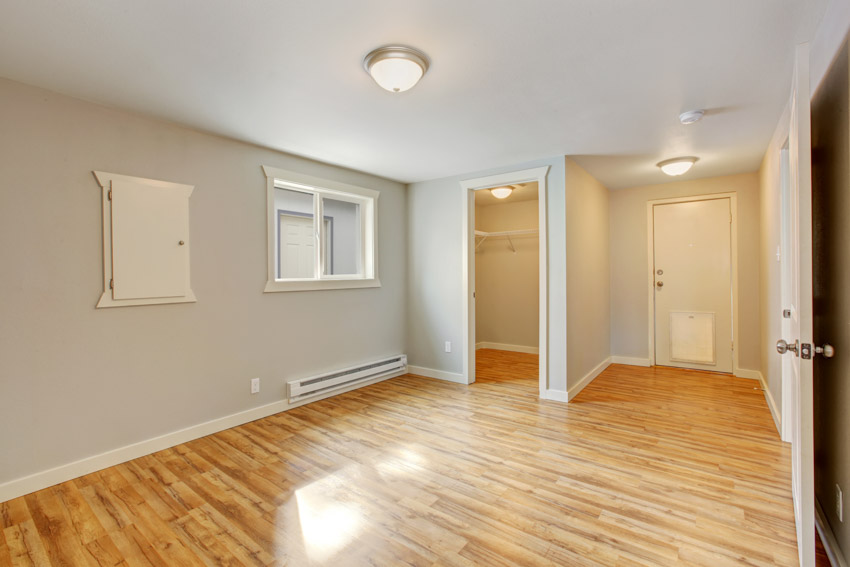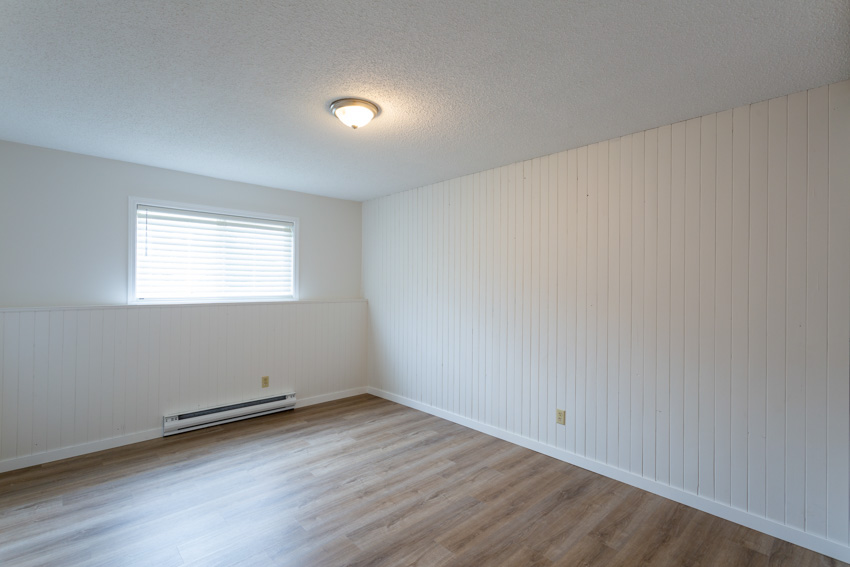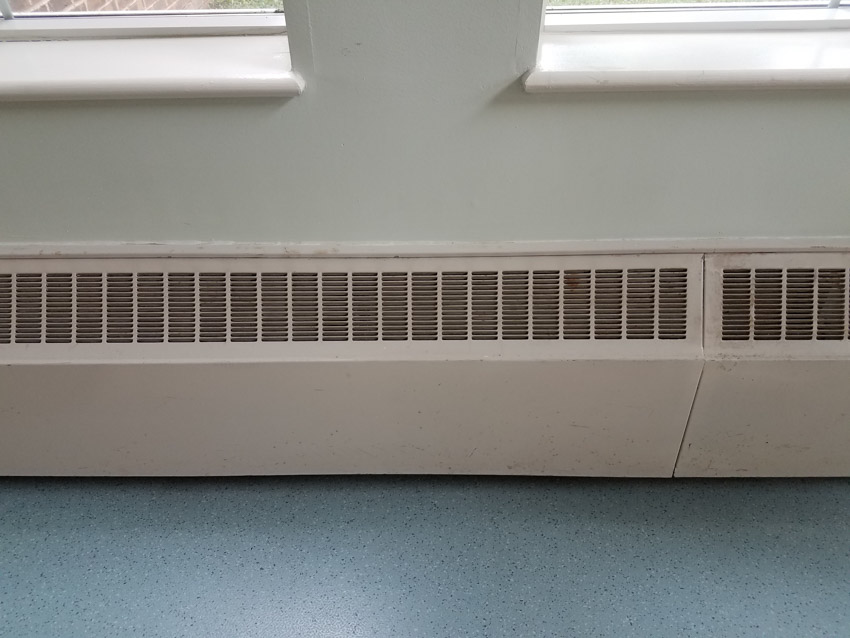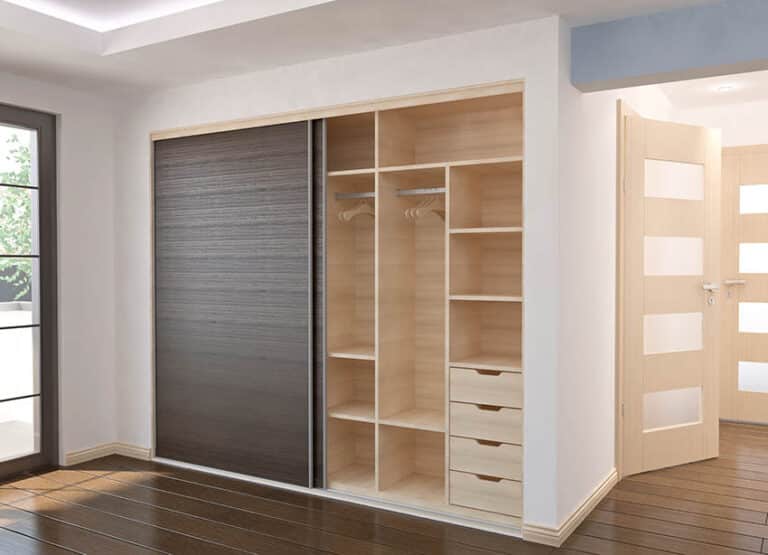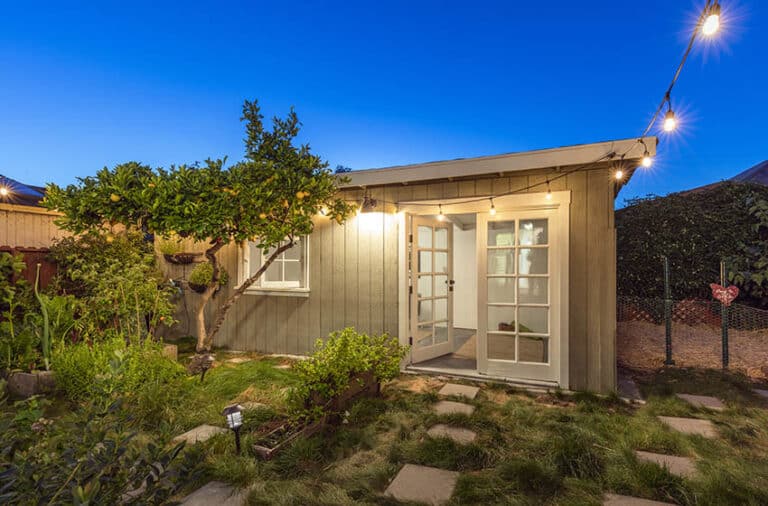Is Electric Baseboard Heating Right For You? Pros And Cons Revealed
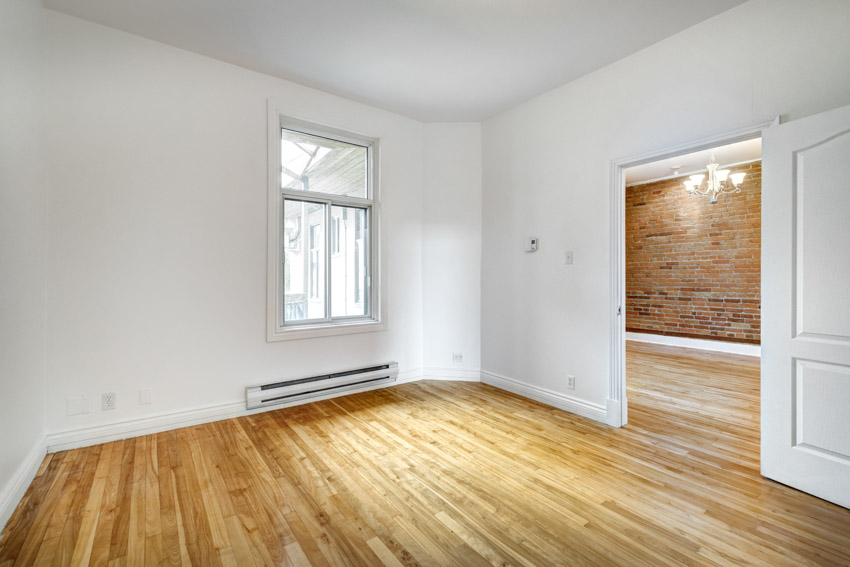
Living in older buildings or homes can undoubtedly have its charms but they also come with a lot of other challenges. For instance, there’s a pretty high chance that the heating style is manual, out of style, and hasn’t had a chance to be updated over the past few decades. It can be anything from radiators, to wood stoves, or to the slightly more modern electric baseboard heaters.
A lot of the older electric heating systems are actually some form of electric heat that operates through duct work. This can turn out to be a little expensive to run at the end of the day.
Although it is worth noting that these heaters can be far more efficient than traditional radiators. They also tend to become more efficient when they are being run constantly and not being turned on and off all the time. [toc]
What Is Electric Baseboard Heating
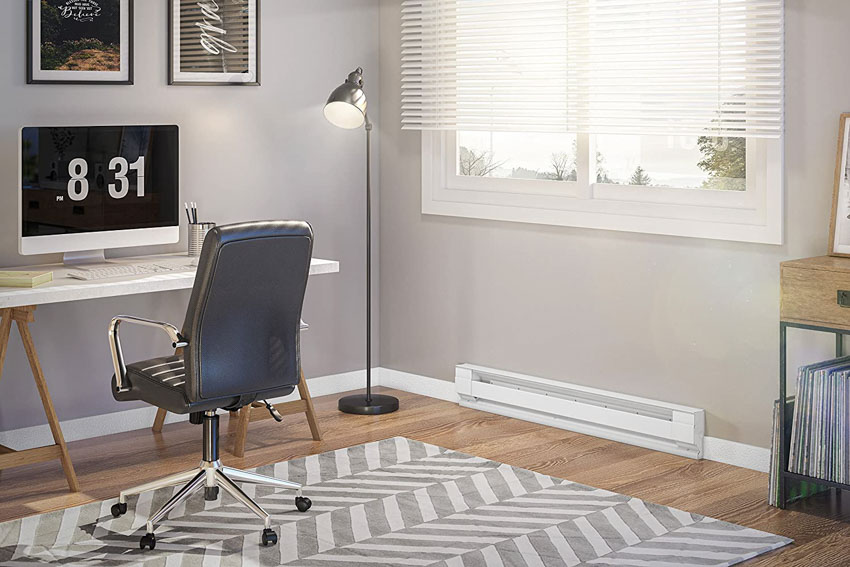
Electric baseboard heating is also otherwise known as electric resistance heating. It’s a type of zone heating. It creates and controls the temperature in each room of the home individually.
This means that there isn’t any need for boilers, furnaces, vents, heating ducts, blowers, and the like. It is standalone and it can be effective in distributing heat without any added implements.
One thing that really makes this method noticeable is that it can take up a lot of precious real estate along the room edges in the home. This can turn out to limit your space décor at times and even the mere arrangement of your furniture and the like.
If you happen to have this kind of heaters at home, you are probably considering your options on either to keep it running for as long as you possibly can or to just replace it altogether.
Let’s take a closer look at it so that we can ultimately arrive at a sound decision about it.
Pros
Electric baseboard heating doesn’t necessarily require a lot of ductwork as opposed to forced-air systems. This technically means that they can be a great heating system option for older homes that would have been otherwise retrofitted.
They can also be a great option if you happen to have rooms in the home that just need a little extra heating during the extra cold days.
Quieter Operation: This method operates far more quietly compared to forced-air systems. This is because of the fact that it doesn’t periodically blast air out.
This is definitely one of the main pros especially if you happen to be looking into heating options in the bedrooms in the home. This will not have a negative impact on your quality of sleep as there won’t be issues with getting you awake late at night because of the loud noises because there technically aren’t any.
Installation Is Easy: It doesn’t require ductwork at all. This means that if you happen to live in a much older home wherein ducts aren’t really around, there isn’t any need for you to worry.
This type of heating system can be easily installed without the use of any. This makes the entire installation process relatively easy and understandably painless.
Low Upfront Cost For Installation: Because of the fact that they’re really easy to install, this means that they happen to be far less expensive compared to the other types of heating systems out there.
If you’re looking into getting some heating options for the home that’s on the lower end of the budget spectrum, then this heater just might be the perfect choice for you.
Great Heat Source: This type of heating system is fairly efficient. It’s also effective particularly if you’re planning to heat up small spaces such as single rooms.
They can also work really well as secondary heating sources for homes that have a fairly large amount of square footage.
Maintenance is Easy – They’re easy to clean. HVAC systems can oftentimes be complicated and a bit of a pain to clean and maintain. This isn’t the case with this system because they can be easily cleaned with a vacuum.
This is a task that a lot of homeowners can do themselves without ever having any doubts of how to get it done the right way. They also don’t require a lot of cleaning to begin with as they don’t require additional maintenance in order for them to run in their optimal condition.
Longer Life Span: These systems are expected to last for 20 years or so with minimal maintenance. This means that you really will be getting bang for buck value for it should you decide to go ahead and invest.
Cons
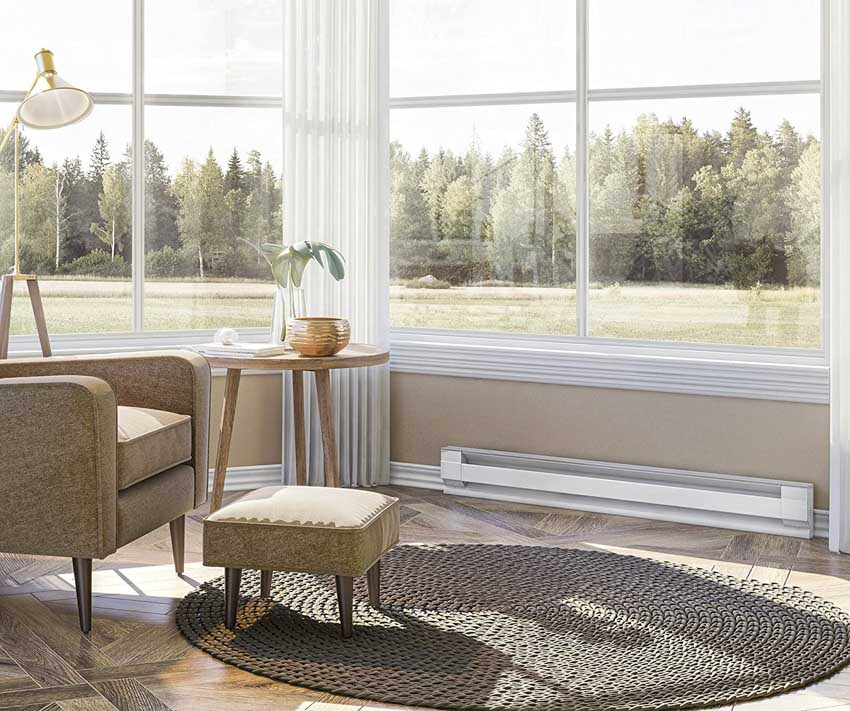
Now let’s go ahead and move on to the cons. The biggest con of this type of heating system for the most part is the relatively high cost to get it running.
A lot of homeowners tend to worry about the humidity and smells coming from these types of units as well. However, it should be mentioned initially that a clean and properly functioning unit shouldn’t be having issues with excessive moisture or burning or chemical smells in the first place.
Should there be anything out of the ordinary, it would be smart to contact a professional straight away.
Operation Can Be Costly: Compared to the other types of residential heating out there, this method isn’t always the most cost-effective one. If cost-effectiveness is a major concern or issue for you, it would be best if you check out other heating options that don’t have anything to do with electric heating.
Takes Up A Lot Of Space: It isn’t the most attractive heating system to have in the home. Apart from the fact that it isn’t all that aesthetic, it also tends to take up a lot of major space; along the baseboards, in particular.
This can be extremely limiting for you and for your design options. You won’t really have a lot of freedom when it comes to how you will be able to position your design elements as well as the different types of furniture styles you’re using.
They Can Get Quite Hot: This is a serious con for this particular heating system. They actually have the tendency to not only generate heat but they tend to get quite hot themselves.
This means that there’s a need for you to make sure that you keep the space around your heaters clear at all times. You need to make sure that you don’t end up damaging anything or worse, starting a fire in the event that it gets too hot and starts a spark.
They Need To Run Constantly: If you’re the type of homeowner who likes to adjust the thermostat or turn it off and on whenever necessary as a way to conserve energy, then these heaters just aren’t for you.
They aren’t built for that type of operation. They have the tendency to use up more power or energy if you change the temperature every now and then.
And even if this isn’t technically that much of an issue for small changes, it can definitely be an issue for homeowners who tend to make a lot of thermostat changes in the home.
They Degrade When Not Cleaned: These heaters become less efficient when they aren’t maintained properly. Actually, any type of heating system tends to degrade when not cleaned properly which is why you need to constantly be on the lookout for maintenance opportunities.
If you aren’t all that sure about how to clean your unit, it would be best to go ahead and contact your professional heating specialist.
Baseboard Heater Size Needed
The main rule of thumb that needs to be observed when it comes to determining what size is needed for an electric baseboard heater is that every square foot of the space that’s being heated requires 10 watts of electric heating.
What this means is that for example, you have a 10 x 10 room sized at 100 square feet that is 10 watts multiplied by 100 square feet. It means that ultimately, you will need 1,000 watts in electric baseboard heating.
This calculation is based on the assumption that your electric baseboard heating system is your primary heating source the different rooms in the house that need it, and that there aren’t any secondary systems being used.
These heating units tend to come in a lot of different styles. There are portable ones that can be plugged into standard 120-volt outlets. This is great if you have rooms that you would like to heat up for only certain periods of time.
When it comes to ongoing or constant use, it would be best to go for baseboard heaters that are directly wired into the household outlets. 240-volt models are more common and energy-efficient although they are also available in 120-volt variants. Lengths of the units may also range from 24 inches to 96 inches.
Cost
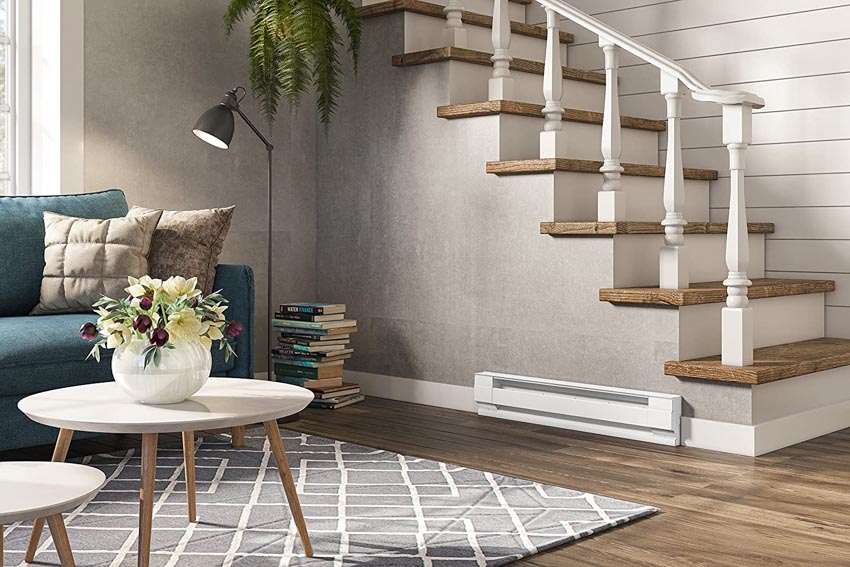
The cost of electric baseboard heaters can be a bit polarizing but a reasonable range would be from something as low as $25 to as high as $250. This is because there are so many types of baseboard heaters out there.
The convection baseboard heaters are on the lower end of that price range and they can oftentimes be at $60 or below. Hydronic baseboard heaters are on the higher end of the price spectrum and these are the ones that range at around $200 to $250 per unit.
You might also be interested to know that on the front end, electric baseboard heaters cost far less to install compared to other main heat sources such as propane oil, heat pumps, natural gas, and the like.
However, because they don’t really have the ability to maintain heat for a prolonged period of time, they can hike up your energy bill. This means that even if they may cost less upfront, they can cost you more in the long run.
Baseboard Heat Cost Per Month
The cost of running electric heaters installed on most baseboard styles per month really varies depending on the climate that your house is in, what its actual square footage measurement is, and how much heating you actually need.
Basing it on the most current calculations (year 2022), in most climates, the cost of running electric baseboard heating for an average-sized home of 1,200 square feet can be at approximately $400 or so per month. This is based on the premise that a 1,200 square foot building or structure will require 12,000 watts of heating.
The next thing to consider is how many hours a day will you be running this heater in the first place. It all depends on the rates in your specific area but keep the kilowatt-hour calculation in mind while you’re at it.
How To Save Money With Baseboard Heat
There are a lot of ways for you to actually save money with electric baseboard heat. We’ve mapped out a few ways for you to save some cash while still being able to enjoy the benefits of getting ample heat for your home.
Start off by always keeping your electric baseboard heaters clean. Dust can build up on your baseboard heater over time. This can end up blocking the heat and stopping it from escaping out into the air properly. This can make the heater work overtime, consuming more energy and running up more costs in the process.
Turn it down. It doesn’t always have to operate in the highest setting. Try to take note if the current temperature at any given point in time. Contact your power company and make sure that your settings are calibrated properly for best results.
Insulate your home. One of the main reasons why heating or air conditioning units work harder than they have to is because the air is constantly coming in and out of the home. This is due to poor insulation in the attic, ceiling and walls.
Insulate your home accordingly so that you won’t have a need to constantly run your electric baseboard heater all the time. Install under door seals and check for areas where cold air may be entering the home to apply additional weather seal.
See more related content in our article about the spray foam insulation pros and cons on this page.

